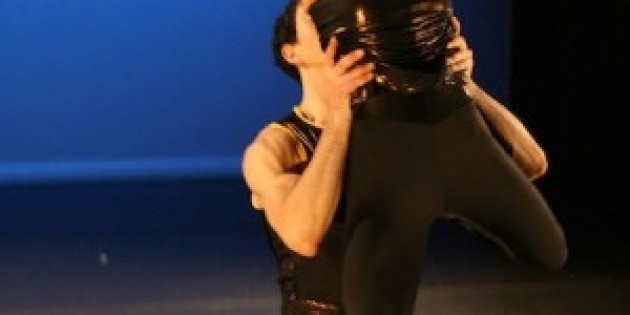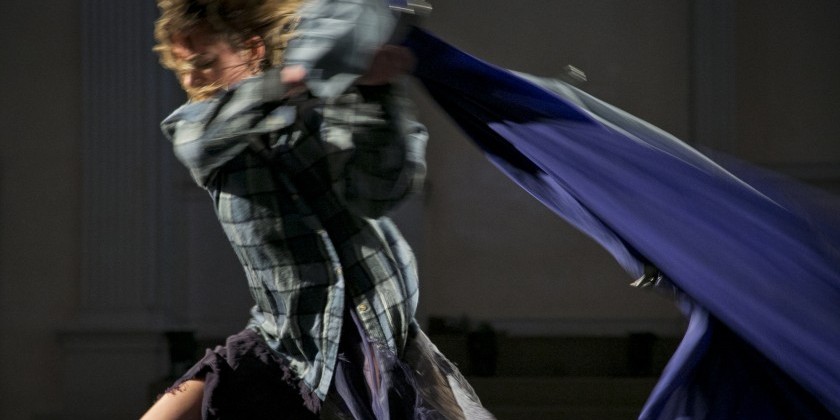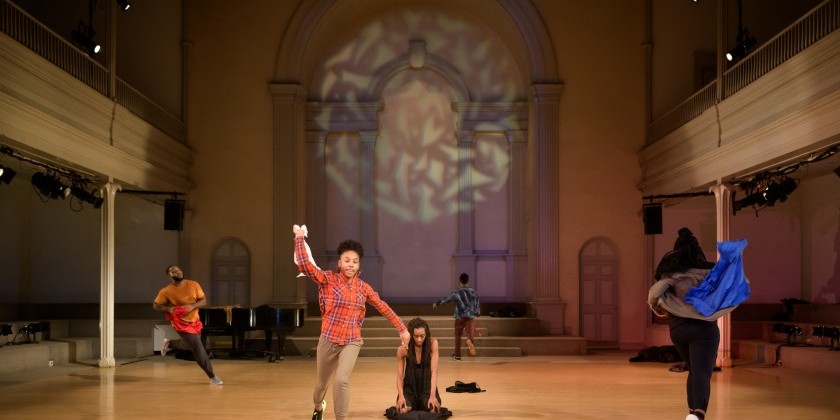The Dance Enthusiast Asks Marisa Gruneberg of white road Dance Media

As the Company Prepares for the Premiere of "Hoarse"
February 13-15, 2013 at Triskelion Arts
Click the Brown PaperTickets website for ticket information.
White road Dance Media choreographer Marisa Gruneberg was brimming with creative energy on a Saturday morning in Williamsburg in February. Living in New York since 2003, Gruneberg has made several dances, many at Triskelion Arts, the company’s unofficial home base. As white road Dance Media embarks on another premiere, Gruneberg talked candidly about the challenges of being a New York-based choreographer, her proclivity for grit and what she would do if she won a large sum of money. Her response? “I would do exactly what I’m doing now, except I may have nicer shoes.”
Trina Mannino for The Dance Enthusiast: Why did you choose to use the fairy tale The Goose Girl as a point of departure for Hoarse?
Marisa Gruneberg: It’s also important to note that the story has a narrative but we’re deconstructing it. My process always starts with a concept or image. The Goose Girl is an arresting story. I love the image of a horse head who talks. The horse head is like Tiresias [a blind prophet in Greek mythology], a seer but it’s not actively participating in the dynamic of the story. The idea of a horse head being nailed to a wall is very grotesque but I can’t help be drawn to it.
TDE: How is the horse head symbolized in the work?
MG: I have an actual taxidermy horse head and a sleeker, more abstract version. This week we’re going to try out both in rehearsal. If it feels like a creepy wax museum, I don’t think we’re going to roll with it.

TDE: In addition to dance, Hoarse will contain live music. What is your collaboration process like with your musician Chad Raines and your three dancers?
MG: I’ve asked a lot from my performers. It’s a mentally and physically exhausting piece. I realized in midst of the process that this work is about survival. We’ve talked often about what keeps us going and explored to reinvent what that means over and over. I knew from the beginning of this process that I wanted to create a strong environment. I want the room to almost shake and vibrate. I communicated that particular feeling and tone to Chad as well as examples of music that I’m working with in rehearsal.
I feel like I’m in the ultimate prep kitchen. I have an amazing group of people and we’ve crafted the work collectively. It’s as if we’re all in smaller separate bowls waiting to be mixed together.
TDE: There are dark undertones that have appeared in a number of your works, including Hoarse. What draws you to this type of subject matter?
MG: There are definitely macabre undertones in Hoarse. I’m not sure how I arrived to it, but I’m always looking for the grit and dirt. I’m much more at home when I’m trying to do something that is real and magical at the same time. In last year’s Evergreen the aesthetic was much brighter. When we performed the piece at Abrons Art Center, the atmosphere became darker because we were in the Underground Theater. I found myself drawn to the work more seeing it this way.

TDE: You’ve done a number of dance films, some in tandem with your live performance works. What do you like about film that you can’t access in live performance?
MG: For me, film is a mode to manipulate a frame of movement in countless ways. I realized a long time ago when I would be making a dance for the stage, I would constantly be thinking of the many angles and points of view I could capture from the same movement. I think that led me to have a heightened awareness of the space and affected the way I staged my dances. The beauty for making dance for film is that you can take it anywhere and see it any time. It could be performed in Argentina as we sit here talking. The moment is preserved in a remarkable way — it’s different than the fleeting nature of live performance. That being said, I do feel like a fish out of water with film. It’s very new to me, but it's exciting to see where it will all lead.

TDE: You’ve been making dances in New York for eleven years. When did you know you wanted to do this as a profession?
MG: I took ballet, tap and jazz while growing up in South Mississippi and the Carolinas. When I was fifteen I took my first modern class in Charleston, South Carolina and was blown away. It was the thing that really made sense to me. I enjoy creating dance more than performing it, even at an early age.
TDE: What is the biggest challenge of being a choreographer in New York?
MG: Someone recently told me that this profession is not a sprint, it’s a marathon. I think people today are bombarded with the notion that New York is no longer an artist friendly city. I don’t believe this to be true. That's not to say it isn’t difficult to get something started here. To keep going can be a challenge, because you’re constantly being faced with a new obstacle. For me, I love the struggle. New York can be a big bad wolf of a city, but I can’t imagine being anywhere else.













